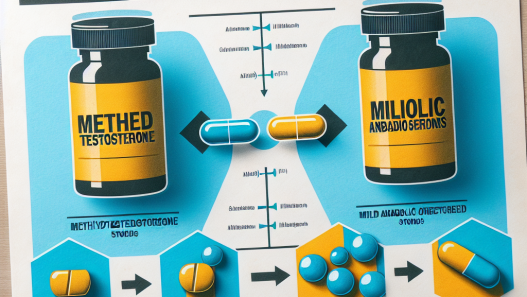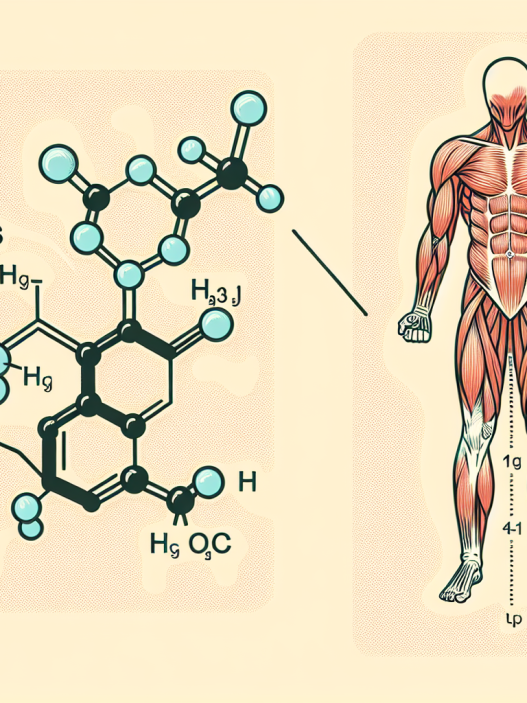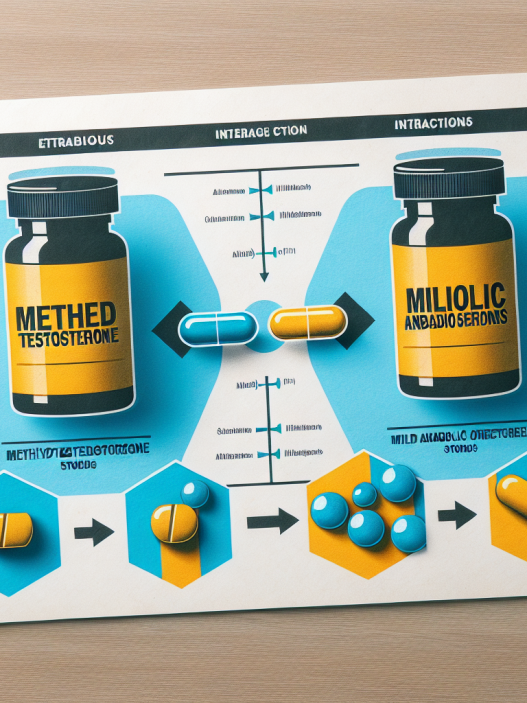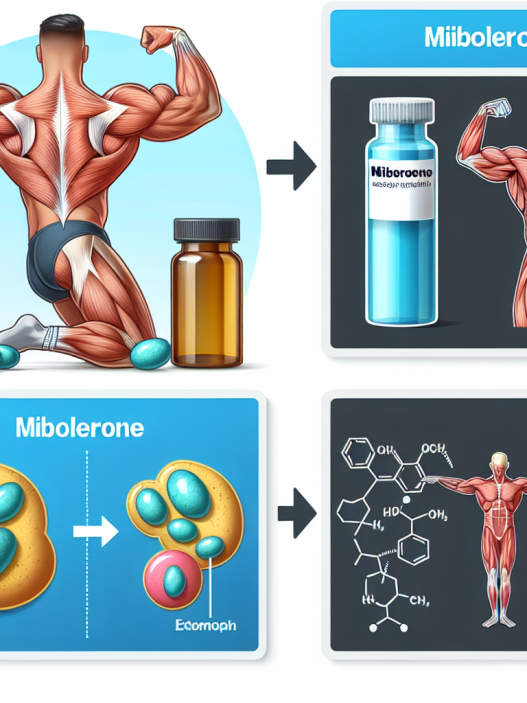-
Table of Contents
«Stay clean and stay ahead with Metandienona-free performance.»
Introduction
Metandienona es un esteroide anabólico que se utiliza comúnmente en el mundo del deporte para mejorar el rendimiento físico y la masa muscular. Sin embargo, su uso está prohibido en competiciones deportivas y su detección en controles antidoping puede resultar en sanciones para los atletas. En esta respuesta, exploraremos cómo se detecta la metandienona en los controles antidoping y por qué es importante para mantener la integridad en el deporte.
The Effects of Metandienona on Athletic Performance and Doping Control Measures
Metandienona, also known as methandrostenolone, is a synthetic anabolic-androgenic steroid (AAS) that has been used for decades by athletes to enhance their performance. It was first developed in the 1950s by Dr. John Ziegler and was initially prescribed for medical purposes, such as treating muscle wasting diseases. However, it quickly gained popularity among athletes due to its ability to increase muscle mass and strength.
The use of metandienona in sports has been a controversial topic for many years. While some argue that it can improve athletic performance, others believe that it poses serious health risks and should be banned from use. As a result, many sports organizations have implemented strict doping control measures to detect and deter the use of metandienona and other performance-enhancing drugs.
One of the main reasons why athletes use metandienona is its ability to increase muscle mass and strength. This is achieved by binding to androgen receptors in the body, which then stimulates protein synthesis and promotes the growth of muscle tissue. As a result, athletes who use metandienona can see significant gains in muscle size and strength in a short period of time.
However, the use of metandienona also comes with a range of potential side effects. These include liver damage, high blood pressure, and increased risk of heart disease. In addition, metandienona can also cause androgenic side effects, such as acne, hair loss, and increased body hair growth. These side effects can be particularly concerning for female athletes, as they may experience masculinizing effects.
Due to the potential health risks associated with metandienona, many sports organizations have banned its use. In addition, they have implemented strict doping control measures to detect and deter athletes from using this drug. These measures include random drug testing, both in and out of competition, as well as targeted testing based on intelligence and suspicious behavior.
One of the most common methods used to detect metandienona in doping control tests is through urine analysis. Metandienona and its metabolites can be detected in urine for up to 4-6 weeks after use. This is because the drug is metabolized and excreted from the body relatively quickly. However, some athletes have found ways to mask the presence of metandienona in their urine, such as using diuretics or other masking agents.
To combat this, some sports organizations have also started implementing blood testing for metandienona. This method can detect the drug for a longer period of time, up to 3-4 months after use. However, blood testing is more invasive and expensive, making it less commonly used in doping control tests.
In addition to testing for the presence of metandienona, some sports organizations have also implemented biological passport programs. These programs monitor an athlete’s blood and urine samples over time to establish a baseline of their biological markers. Any significant changes in these markers can indicate the use of performance-enhancing drugs, including metandienona.
Despite these doping control measures, some athletes still manage to use metandienona and other performance-enhancing drugs without getting caught. This is why it is crucial for sports organizations to continue to improve and evolve their testing methods to stay ahead of those who are trying to cheat.
In conclusion, while metandienona may have some benefits in terms of enhancing athletic performance, its use comes with serious health risks and is banned by most sports organizations. Doping control measures, such as urine and blood testing, as well as biological passport programs, are in place to detect and deter athletes from using this drug. It is important for athletes to understand the potential consequences of using metandienona and to compete fairly and ethically in their respective sports.
Understanding the Detection and Elimination of Metandienona in Anti-Doping Testing
Metandienona, also known as methandrostenolone, is a synthetic anabolic-androgenic steroid that has been used for decades by athletes and bodybuilders to enhance their performance and muscle mass. However, due to its potential for abuse and health risks, it has been banned by most sports organizations and is considered a prohibited substance in anti-doping testing.
But how exactly does metandienona get detected in anti-doping tests? And what measures are taken to eliminate it from athletes’ bodies? In this article, we will delve into the science behind the detection and elimination of metandienona in anti-doping testing.
Firstly, it is important to understand how metandienona works in the body. When ingested, it binds to androgen receptors in the muscles, promoting protein synthesis and increasing muscle mass. This results in improved strength and performance, making it a popular choice among athletes.
However, metandienona also has several adverse effects on the body, including liver damage, cardiovascular issues, and hormonal imbalances. These risks have led to its ban in sports and strict regulations in the medical field.
In order to detect the presence of metandienona in an athlete’s body, anti-doping tests use a method called gas chromatography-mass spectrometry (GC-MS). This technique involves separating and identifying the different components of a sample, in this case, an athlete’s urine or blood.
The first step in the process is sample collection. Athletes are required to provide a urine or blood sample, which is then sealed and sent to a certified laboratory for analysis. The sample is then divided into two portions, one for initial testing and the other for confirmatory testing.
The initial testing involves using immunoassay techniques to screen for the presence of metandienona. This method is based on the principle of antigen-antibody binding, where a specific antibody is used to detect the presence of a particular substance. If the initial test results are positive, the sample is then subjected to confirmatory testing.
Confirmatory testing is a more specific and accurate method of detecting metandienona. It involves using GC-MS to separate and identify the different components of the sample. This technique is highly sensitive and can detect even trace amounts of metandienona in the body.
Once metandienona is detected in an athlete’s sample, the next step is to eliminate it from their body. This is where the concept of the detection window comes into play. The detection window refers to the period of time during which a substance can be detected in the body after its use.
In the case of metandienona, the detection window is relatively short, ranging from 3 to 6 days after ingestion. This means that athletes who use metandienona must time their usage carefully to avoid getting caught in anti-doping tests.
To eliminate metandienona from the body, athletes are advised to stop using the substance and allow their body to naturally metabolize and excrete it. However, this process can be accelerated by using certain medications or supplements that aid in the elimination of steroids from the body.
One such medication is tamoxifen, which is commonly used to treat breast cancer but has also been found to increase the excretion of steroids in the urine. Other supplements such as milk thistle and dandelion root have also been shown to aid in the detoxification of the liver, which is responsible for metabolizing and eliminating steroids from the body.
In conclusion, metandienona is a banned substance in sports due to its potential for abuse and health risks. Its detection in anti-doping tests is done through GC-MS, and its elimination from the body can be aided by certain medications and supplements. As the fight against doping in sports continues, it is crucial for athletes to understand the science behind the detection and elimination of substances like metandienona to avoid facing consequences for their actions.
The Controversy Surrounding Metandienona Use in Sports and Its Impact on Doping Regulations
Metandienona, also known as methandrostenolone, is a synthetic anabolic-androgenic steroid that has been used for decades in the world of sports. It was first developed in the 1950s by Dr. John Ziegler and was initially used to treat medical conditions such as osteoporosis and muscle wasting diseases. However, it didn’t take long for athletes to discover its performance-enhancing effects, and it quickly became a popular choice among bodybuilders and other athletes.
The use of metandienona in sports has been a controversial topic for many years, with some arguing that it should be banned due to its potential health risks and unfair advantage in competition. On the other hand, others argue that it should be allowed as long as it is used responsibly and within the guidelines of doping regulations. So, the question remains, can metandienona be detected in doping tests?
The short answer is yes. Metandienona can be detected in doping tests, and it is considered a prohibited substance by most sports organizations. The World Anti-Doping Agency (WADA) has listed metandienona as a banned substance under the category of anabolic agents. This means that athletes who test positive for metandienona can face serious consequences, including disqualification, suspension, and even loss of medals or titles.
But how does metandienona show up in doping tests? When an athlete takes metandienona, it is metabolized in the liver and excreted through urine. The metabolites of metandienona can be detected in urine samples through a process called gas chromatography-mass spectrometry (GC-MS). This method is highly sensitive and can detect even small traces of the drug in the body.
One of the reasons why metandienona is banned in sports is because of its potential health risks. Like other anabolic steroids, metandienona can cause serious side effects, including liver damage, cardiovascular problems, and hormonal imbalances. It can also lead to psychological effects such as aggression, mood swings, and dependency. These risks are even higher when the drug is used in high doses or for prolonged periods.
Moreover, the use of metandienona gives athletes an unfair advantage over their competitors. It increases muscle mass, strength, and endurance, which can significantly improve an athlete’s performance. This is why it is often referred to as a performance-enhancing drug. Athletes who use metandienona have an edge over those who don’t, which goes against the principles of fair play and sportsmanship.
Despite the clear risks and unfair advantage, some argue that metandienona should be allowed in sports as long as it is used responsibly and within the guidelines of doping regulations. They argue that banning the drug only pushes athletes to use it in secret, without proper medical supervision, which can be even more dangerous. They also point out that other substances, such as caffeine and creatine, are allowed in sports and can also enhance performance.
However, the use of metandienona is not just a matter of personal choice. It also has a significant impact on the integrity of sports and the message it sends to young athletes. Allowing the use of metandienona would create a culture of doping and send the message that winning is more important than fair play and the health of athletes.
In conclusion, metandienona can be detected in doping tests, and it is considered a prohibited substance by most sports organizations. Its use in sports is a controversial topic, with arguments on both sides. However, the potential health risks and unfair advantage it gives to athletes make it a dangerous and unethical choice. It is essential for athletes to understand the consequences of using metandienona and to prioritize their health and the integrity of sports over short-term gains.
Q&A
1. ¿Es posible detectar la metandienona en controles antidoping?
Sí, la metandienona es una sustancia que puede ser detectada en controles antidoping.
2. ¿Cuánto tiempo puede permanecer la metandienona en el cuerpo?
La metandienona puede permanecer en el cuerpo por un período de hasta 6 semanas después de su consumo.
3. ¿Qué tipo de deportistas pueden ser sometidos a controles antidoping?
Cualquier deportista que participe en competiciones oficiales puede ser sometido a controles antidoping, ya sea a nivel amateur o profesional.




















